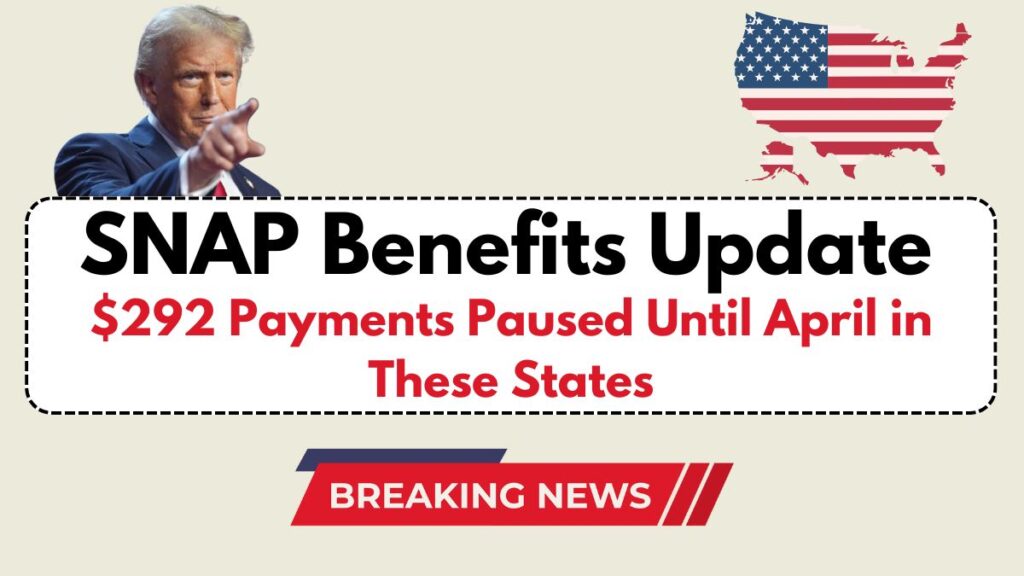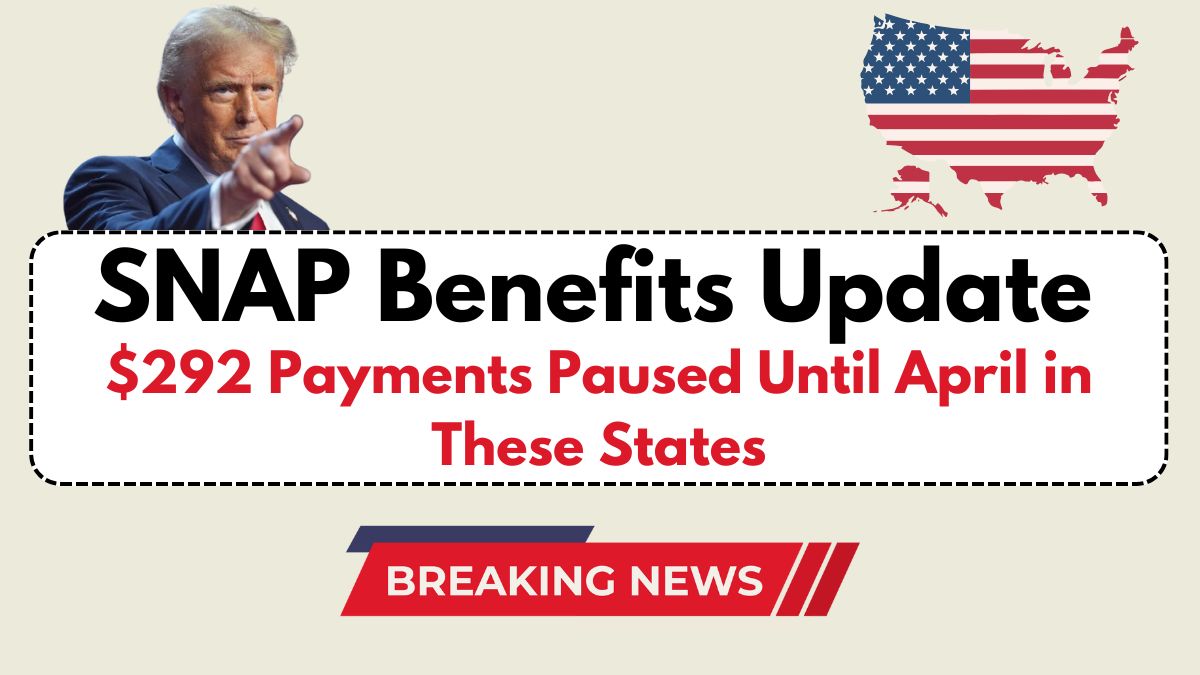During the COVID-19 pandemic, the federal government introduced Emergency Allotments (EAs) as a temporary increase in Supplemental Nutrition Assistance Program (SNAP) benefits. These additional funds were designed to help low-income households cope with financial instability and rising food costs, providing at least $95 extra per month, with some families receiving significantly more. However, as of April 2025, these additional benefits will no longer be available in many states, returning SNAP payments to their pre-pandemic levels.
The discontinuation of these emergency funds marks a significant shift, potentially impacting millions of families. With inflation and fluctuating food prices, many beneficiaries will need to reassess their financial planning and seek alternative resources to supplement their nutritional needs.

States Affected by the SNAP Benefit Reduction
The rollback of emergency SNAP allotments is taking place nationwide, but the last group of states implementing this change includes:
| State | State | State |
|---|---|---|
| Alabama | Maine | Ohio |
| California | Maryland | Oklahoma |
| Colorado | Massachusetts | Oregon |
| Connecticut | Michigan | Pennsylvania |
| Delaware | Minnesota | Rhode Island |
| District of Columbia | Nevada | Texas |
| Hawaii | New Hampshire | Utah |
| Illinois | New Jersey | Vermont |
| Kansas | New Mexico | Virginia |
| Louisiana | New York | Washington |
| West Virginia | Wisconsin | North Carolina |
Starting in April 2025, residents of these states will experience a reduction in their SNAP benefits. Households must adjust their budgets and seek additional support to compensate for the lost emergency funding.
Effects on Beneficiaries
With the cessation of emergency SNAP allotments, recipients will revert to the pre-pandemic method of benefit calculation. This system determines benefits based on factors such as income, household size, and certain qualifying expenses. As a result, many households will see a substantial reduction in their monthly SNAP benefits. Some key impacts include:
- Minimum Reduction: Households losing at least $95 per month.
- Higher Losses for Larger Families: Some families, especially those with multiple dependents, may experience reductions exceeding $250 per month.
- Financial Strain: The reduction comes at a time when food prices remain unpredictable, making it harder for families to afford essential groceries.
- Increased Reliance on Alternative Resources: Many beneficiaries will need to explore other assistance programs, food banks, and community services to meet their dietary needs.
Future Strategies to Cope with Reduced SNAP Benefits
Although the reduction in SNAP benefits presents challenges, there are several strategies that beneficiaries can use to lessen the impact:
1. Update Household Information
Ensure that all personal and financial information is up to date with the state’s SNAP agency. Changes in income, household composition, rent, and other expenses can affect benefit calculations, possibly increasing the amount received.
2. Explore Other Assistance Programs
Many families qualify for additional food assistance programs, including:
- Special Supplemental Nutrition Program for Women, Infants, and Children (WIC): Provides food assistance to low-income pregnant women, new mothers, and children under five.
- National School Lunch Program (NSLP): Offers free or reduced-price meals for children in public and nonprofit private schools.
- Temporary Assistance for Needy Families (TANF): Provides financial support for qualifying low-income families.
3. Utilize Food Banks and Pantries
Local food banks and pantries offer supplemental food resources. Many operate on a no-cost basis, helping families bridge the gap left by the SNAP benefit reductions. Organizations such as Feeding America provide directories to locate nearby food banks.
4. Seek Community Support Services
Dialing 211 connects individuals with various local services, including:
- Housing assistance
- Utility bill aid
- Medical and healthcare support
- Employment and training programs
Community organizations often provide multi-faceted support, ensuring that families not only receive food assistance but also gain access to resources that improve financial stability.
Looking Forward: The Future of SNAP
Although emergency SNAP benefits are ending, staying informed about policy changes and new resource opportunities remains essential. Beneficiaries should:
- Engage with Advocacy Groups: Organizations advocating for food security and SNAP policy improvements can offer guidance and updates on legislative changes.
- Monitor Policy Developments: Keeping track of federal and state legislation may provide insight into future support programs.
- Use Online Tools and Resources: Many government and nonprofit websites provide up-to-date information on benefit eligibility and additional assistance programs.
The transition back to pre-pandemic SNAP benefits presents challenges, but with proper planning and access to community resources, individuals and families can navigate this change effectively.
Frequently Asked Questions (FAQ)
1. Why are the emergency SNAP benefits ending?
Emergency SNAP allotments were a temporary measure introduced during the COVID-19 pandemic to help struggling households. The federal government has decided to end these extra payments as the economic conditions stabilize.
2. How much will my benefits decrease?
The reduction varies by household. The minimum decrease is $95 per month, but some families may see cuts exceeding $250, depending on their previous benefit amounts.
3. Are there any programs that can help offset the loss of SNAP benefits?
Yes. Programs such as WIC, NSLP, TANF, and local food banks can provide additional assistance.
4. How can I check if I qualify for additional benefits?
You can visit your state’s SNAP website or dial 211 for information on various assistance programs available in your area.
5. What should I do if I can’t afford groceries after the benefit reduction?
Consider reaching out to local food banks, community support organizations, and applying for additional aid programs. Budgeting and meal planning can also help stretch available resources.
6. Will SNAP benefits ever increase again?
While the emergency allotments are ending, changes in federal policy, inflation adjustments, or new legislation could result in future modifications to SNAP benefits. Stay informed through official channels and advocacy organizations.
By staying proactive and informed, SNAP beneficiaries can better navigate these changes and ensure continued access to essential food resources.
For More Information Click Here
Pari is a passionate writer known for captivating stories that blend imagination and reality. Inspired by travel, history, and everyday moments, Pari crafts narratives that resonate deeply with readers.
